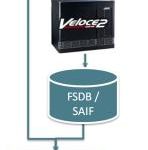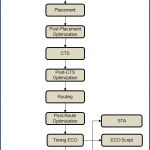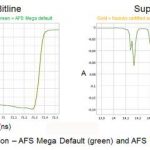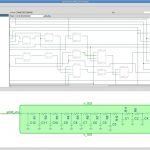Yes, it’s a pleasant surprise; it is Virtual Fabrication Platform, one of the new innovations in 2013. I was looking around for what kind of breakthrough technologies will be announced in DAC this year. And here I came across this new kind of innovative tool which can produce final virtual fabricated 3D structures after following… Read More
Electronic Design Automation
DAC lunch seminar: Better IP Test with IEEE P1687
What: DAC lunch seminar (register here)
When: June 5, 2013, 11:30am – 1:30pm
Where: At DAC in lovely Austin, TX
Dr. Martin Keim of Mentor Graphics will present this overview of the new the IEEE P1687 standard, called IJTAG for ‘internal’ JTAG.
If you are involved in IC test*, you’ve probably heard about IJTAG. If you … Read More
TSMC ♥ Berkeley Design Automation
As I mentioned in BDA Takes on FinFET Based Memories with AFS Mega:
Is AFS Mega real? Of course it is, I’m an SRAM guy and I worked with BDA on this product so I know. But don’t take my word for it, stay tuned for endorsements from the top SRAM suppliers around the world.
Here is the first customer endorsement from the #1 foundry.… Read More
Atrenta: Mentor/Spyglass Power Signoff…and a Book
Today Atrenta and Mentor announced that they were collaborating to enable accurate, signoff quality power estimation at the RTL for entire SoCs. The idea is to facilitate RTL power estimation for designs of over 50M gates running actual software loads over hundreds of millions of cycles, resulting in simulation datasets in the… Read More
Advanced Verification – HW/SW Emulation – SoC/ASIC Prototyping
Aldec, Inc. is an industry-leading Electronic Design Automation (EDA) company delivering innovative design creation, simulation and verification solutions to assist in the development of complex FPGA, ASIC, SoC and embedded system designs. With an active user community of over 35,000, 50+ global partners, offices worldwide… Read More
Efficient Handling of Timing ECOs
Today, in the design of any type of system on chip (SoC), timing closure is a major problem and it only gets worse with each new, and more advanced process technology. Timing closure is closely inter-leaved with power and clock design. The complexity of achieving closure rises sharply with increasing design density and advancing… Read More
The Hot Zone: Do Good While Having Fun
The big 50th Anniversary party for DAC is on Monday night at the home of Austin City Limits. However, you can do good while enjoying yourself and also get into “The Hot Zone”, an exclusive area within the party in the penthouse Jack and Jim Gallery. The Gallery features 30 original photographs from the godfather of music… Read More
BDA Takes on FinFET-based Memories with AFS Mega
Berkeley Design Automation today announced the first silicon-accurate circuit simulation for mega-scale arrays like memories and CMOS image sensors. If this tool lives up to its claims, it is going to be a big deal for FinFET-based circuits, Memory designers are rightly worried about having the accuracy necessary to include… Read More
RTL Signoff Theater
We have talked for years about RTL signoff, the idea that a design could be finalized at the RTL level and then most of the signoff would take place there. Then the design would be passed to a physical implementation team who would not expect to run into any problems (such as routing congestion, missing the power budget or similar problems).… Read More
Transistor, Gate and RTL Debug Update at DAC
Debugging an IC design at the transistor, Gate and RTL levels is often necessary to meet timing requirements and understand analog or digital behavior, yet the process itself can be a tedious one, filled with manual steps, therefore making it an error-prone process. EDA tools have been created to help us graphically debug transistor,… Read More











Quantum Computing Technologies and Challenges